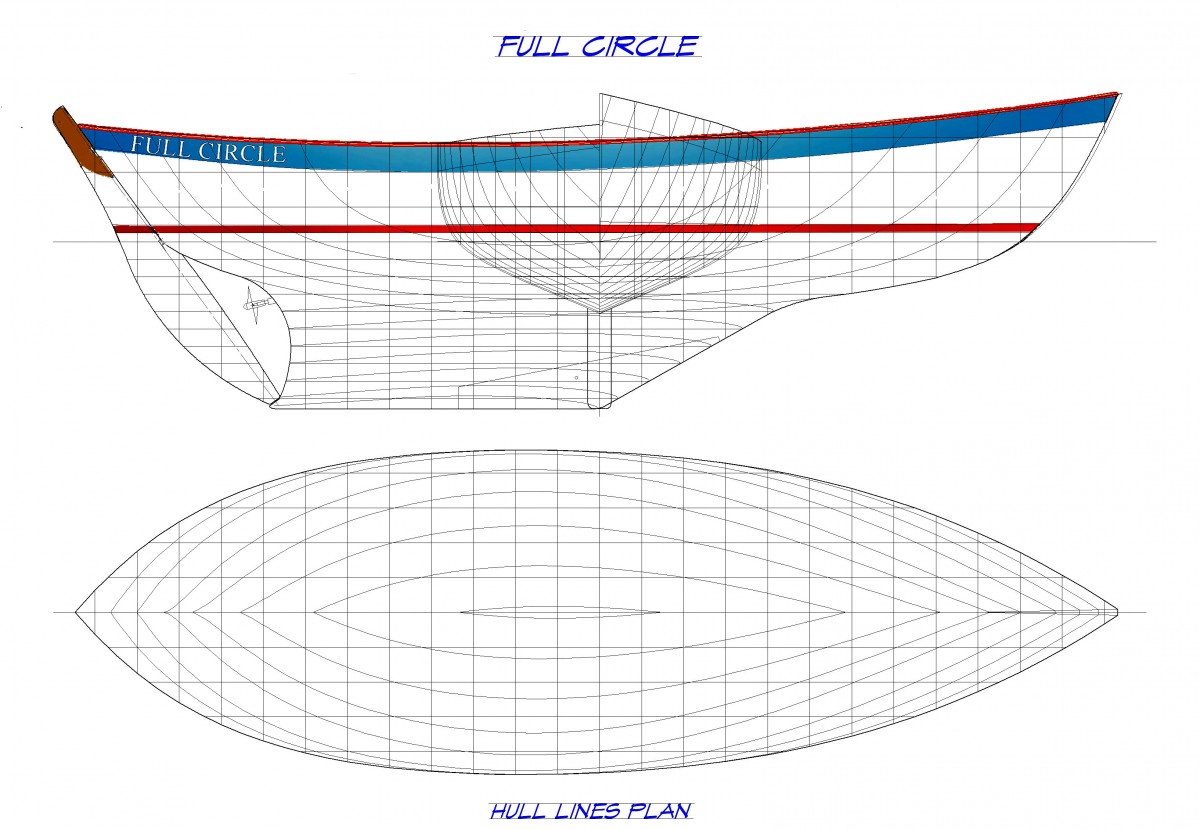MY FINAL, end of my life double-ender is a 30-footer named FULL CIRCLE. This article will describe how her hull shape developed from my earlier designs.
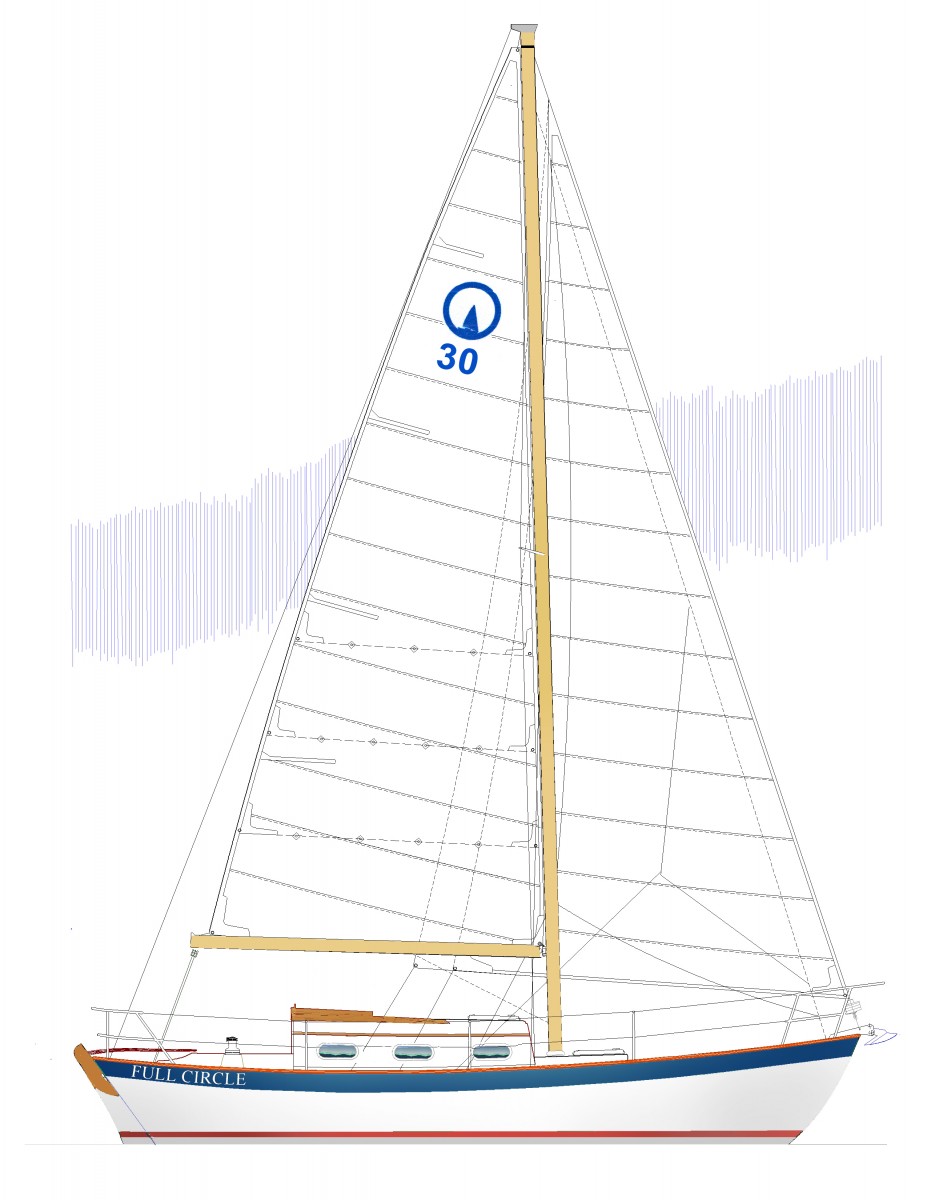
THE FULL CIRCLE 30.
THE 26′ FRANCES
MY FIRST double-ended design was the 26-foot FRANCES. My intention was to steal some of the thunder of the recently introduced Westsail 32 but to tweak the hull shape to provide far superior light and moderate air performance. The Westsail was very heavy (D/L of 419), high sided, extremely beamy, had a keel that extended way too far forward, was more stable than it needed to be, and famously slow.
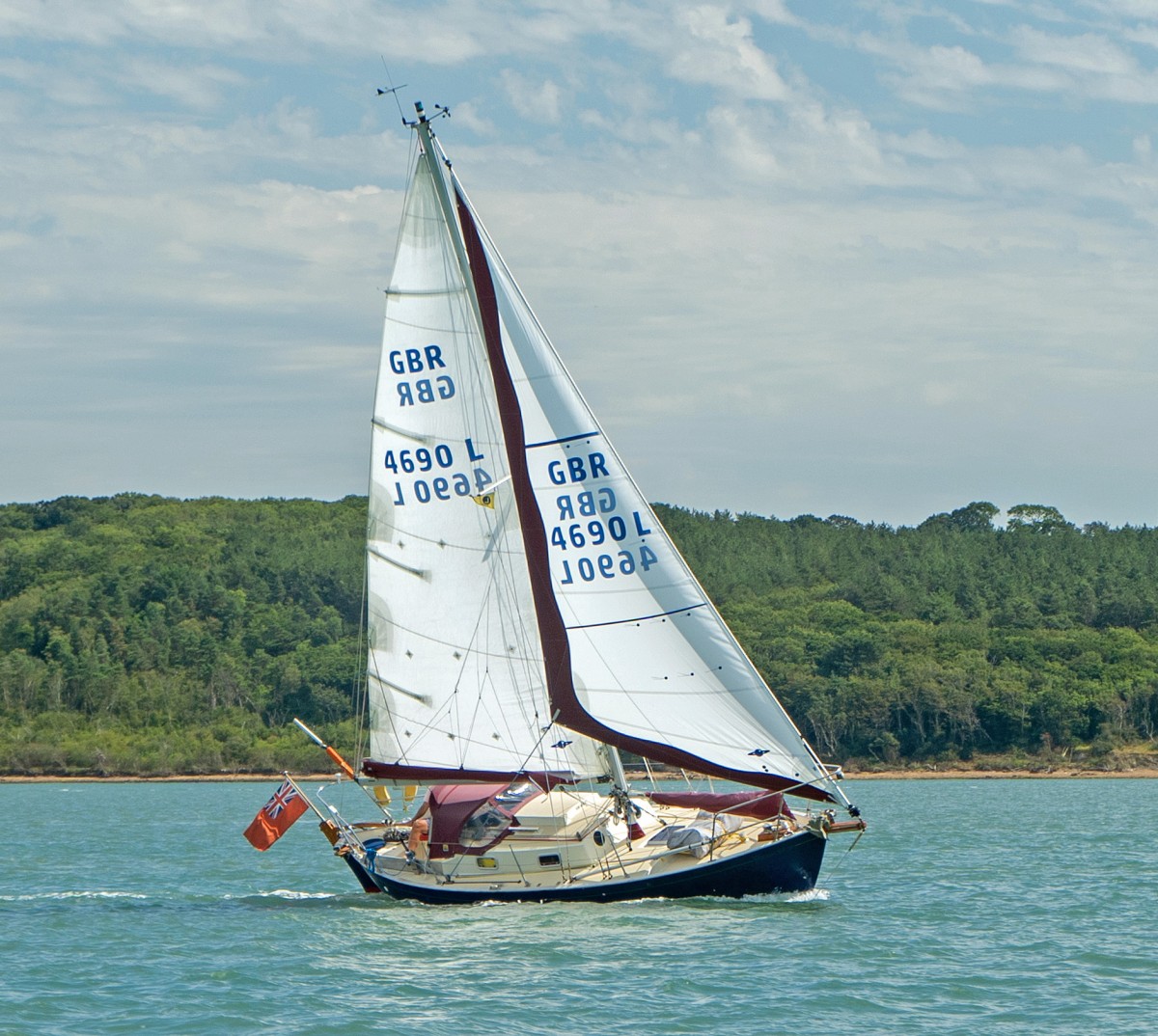
A British built cutter rigged FRANCES.
I ALSO wanted a heavy boat, because I anticipated doing occasional open ocean sailing and weight translates into comfort at sea. But how then could I make it faster? One thing that influenced me were the heavy but fast designs of Sparkman and Stephens… Dorade and Stormy Weather. They were heavy, but much narrower and with a greater proportion of ballast and with much steeper deadrise than the Westsail.
I had also worked for Dick Carter for a couple of years and was heavily influenced by his ideas of what made a hull fast. One of his ideas that worked its way into the FRANCES lines was the lack of a garboard radius… the canoe body washed almost horizontal toward the centerline, just like a canoe, and there was a very tight radius between the hull bottom and the side of the keel. This reduced frontal area, increased stability by paring away underwater volume, and increased the vertical height and thus effectiveness of the keel.
IN DESIGNING the FRANCES, LEIGH, SARAH, CAROL and FULL CIRCLE I stuck to the conservative, take no risks philosophy that was natural to me. If something worked on one design I didn’t change it much on the next. The one factor that stayed the same on all five designs was the proportion of beam to length.. overall beam being just under one-third of overall length. I played off the stability factors against each other (total weight, ballast proportion, sectional shape and deadrise angle) in such a way as to match the designed heeling angles recommended in Skene’s Elements of Yacht Design. All of the designs sailed unexpectedly well in the 5 to 15 knot winds where I hoped they would excel. A few owners insisted on tall racing rigs, and these went like stink in light airs but heeled too much in ocean conditions. Some owners asked for short, easily managed rigs and these were a bit slow in the light stuff. But overall the yachts were well loved, many have made ocean crossings, and a few have won races. I’m hoping that FULL CIRCLE will be the best of the breed.
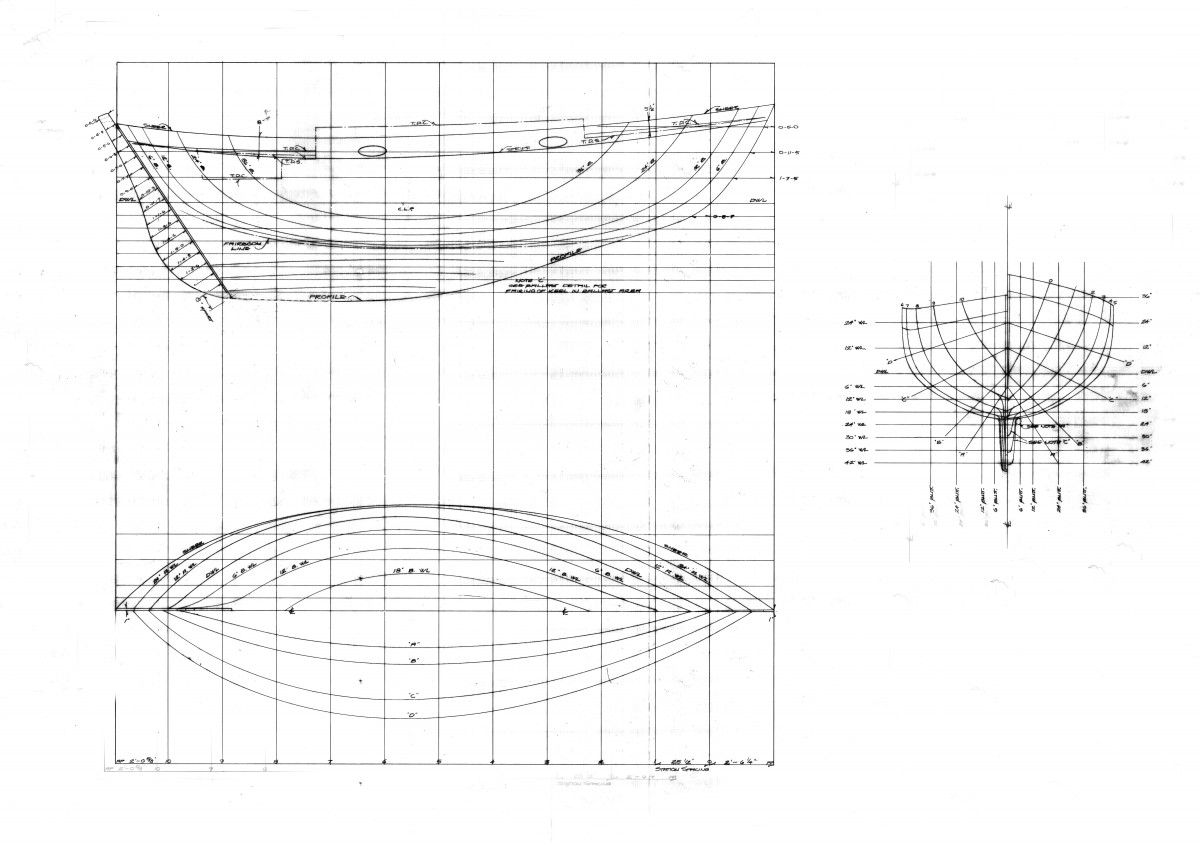
FRANCES HULL LINES. With a Displacement/Length ratio of 335, she was definitely heavy. And her ballast accounted for just about half of the entire yacht’s weight versus the Westsail’s 36 percent. This was necessary to provide stability despite the quite high deadrise angle. The keel was cutaway forward to reduce wetted surface and weather helm. She was much faster for her length than the Westsail 32 and Southern Cross 31, popular designs at the time. The one flaw that has become obvious to me was the swooping up of the keel profile aft, which reduced the effectiveness of the keel when hard on the wind. Approximately 200 of the yachts were built.
THE 30′ LEIGH and VICTORIA 30.
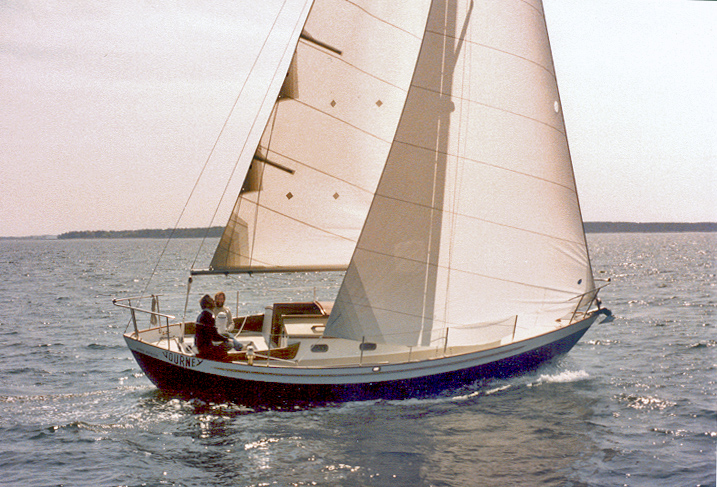
A TOM MORRIS built Leigh. With her big genoa this one could really go to windward in light airs.
THE LEIGH 30 was my second double-ender. She was intended to offer even better light air performance than the FRANCES.
Once again LEIGH had a totally convex midship section- no hollows. Generally speaking this means a low wetted surface shape. She had flatter deadrise but almost the same ballast ratio – 49% as opposed to the 50% ratio on the FRANCES. With flatter deadrise the D/L ratio could be lighter… 317 versus 335 for the FRANCES. The keel was even more cutaway forward, but the rudder was brought forward beneath the hull, to reduce the length of the keel and therefore its wetted surface.
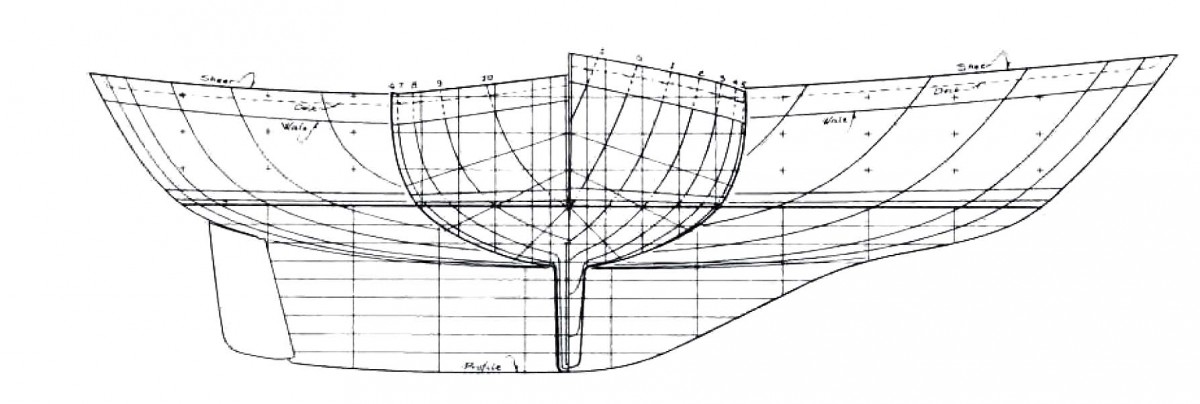
LEIGH and VICTORIA 30 HULL LINES. With a Displacement/Length ratio of 317 she was lighter than the FRANCES. Consequently her deadrise angle had to be flatter for stability. The keel was even more cutaway forward than the FRANCES and the keel much shorter with the rudder being pulled much further forward. The swooping up of the keel profile aft was still there, but much reduced. The Dick Carter influenced lack of a garboard radius should be obvious. Because of the location of the ruddershaft she required a pedestal steerer. Or tiller steered versions could be had which required a pantograph type mechanism to get the tiller aft so as not to sweep the cockpit. Approximately 100 of the yachts were built.
THE 32′ SARAH.
My third double-ender, the SARAH, was intended as a slightly more performance orientedl departure from the LEIGH and VIC 30.
SARAH again had a totally convex midship section- no hollows – a low wetted surface shape. Her midship section was the most influenced by my time working for Dick Carter. It was very similar to his early “tonners” such as YDRA. In fact had I rolled the topsides inward at the deck to give her tumblehome you could easily see it as a Dick Carter copy. She had a bit more deadrise than the LEIGH… almost identical to the FRANCES. Her Ballast/Displacement ratio was 46% and her Disp/L ratio was 287. The bulge in the topsides gave her a good measure of reserve stability. In light airs she went well because the waterplane was the ideal proportion of BWL to LWL that translates into light air speed. But when it came on to blow the topsides went to work resisting further heeling – the idiom is she “puts her shoulders into it.” . The keel was essentially identical to that of the LEIGH/VIC 30..
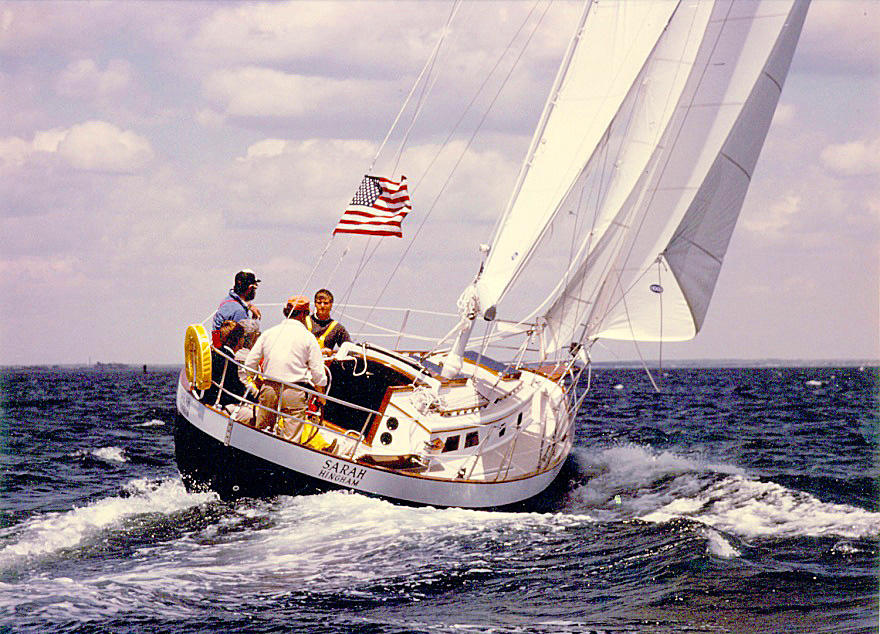
Like LEIGH and the VIC 30, SARAH was very stiff, so fast to windward in a breeze. You can see how she’s putting her bulging topsides to work to resist further heeling.
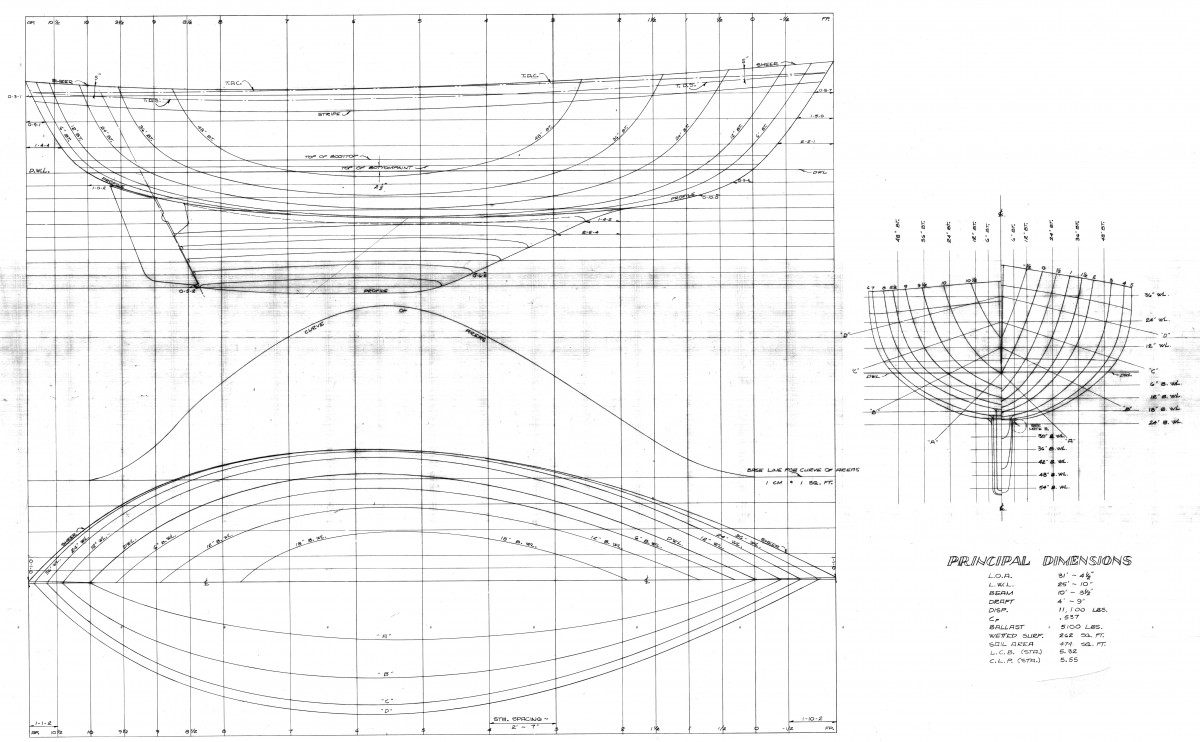
SARAH HULL LINES. A little lighter DISP/L ratio than the previous designs and with a slightly smaller ballast ratio, she compensated by having a higher proportion of beam to length – very nearly one-third. One must remember that ballast/displacement ratios of 45% to 50% were all very high compared with most other designs in the early 1970s, which explains where my designs derived their stability. The swooping up of the keel profile aft was still there, but further reduced. I believe 8 of the yachts were built.
THE 24′ CAROL.
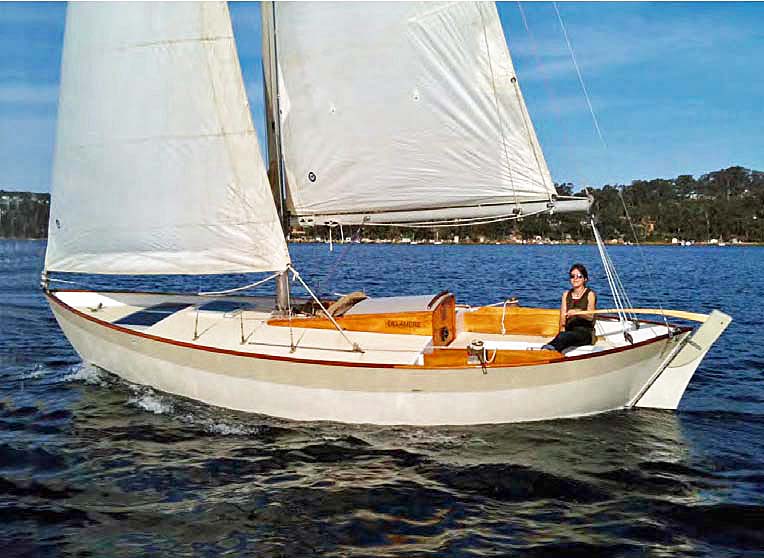
A CAROL, CUSTOM BUILT IN AUSTRALIA. With a tighter turn of the bilge she could carry a more powerful rig for her size than the previous designs, so she could really GO to windward. Approximately 10 of the yachts were built.
THE CAROL was my fourth double-ender. She was the best performing of my double-enders so far, so I have followed her lines more closely on the FULL CIRCLE 30. One picture tells a thousand words. But a video is better. Just look at how fast she goes to windward in about 15 knots of breeze! Click here:
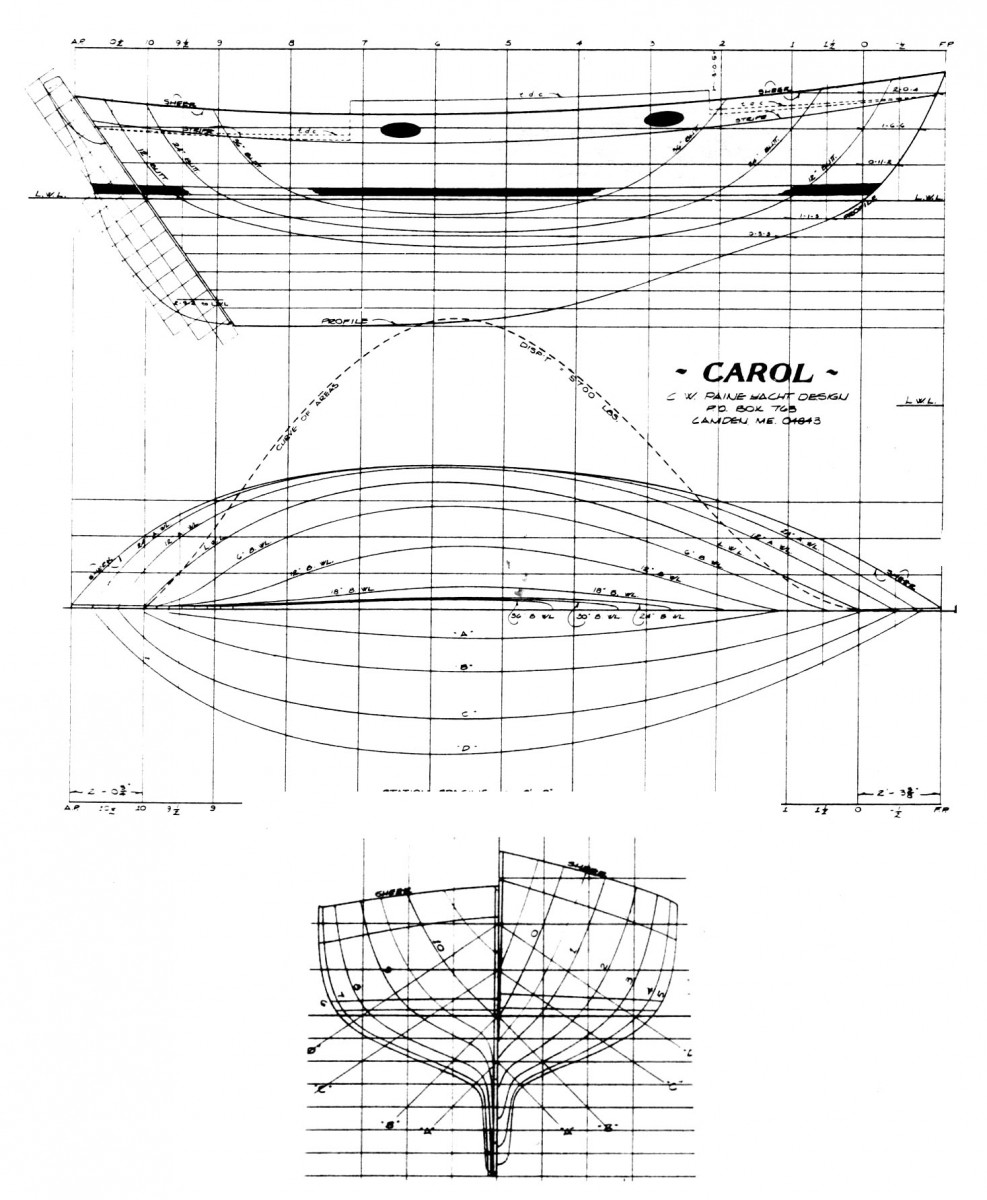
CAROL HULL LINES. With her tighter turn of the bilge she could get by with less ballast… 45%. And I actually designed in a bit of a garboard radius. Gone forever was the swooped up keel profile aft. Her stern is fuller than the previous designs to enhance stability.
The 30′ FULL CIRCLE.
FINALLY, WE have come to FULL CIRCLE. She is the culmination of my 45 years of professional yacht design. If I have learned anything she will be the finest of my entire long career of designs. Her basic shape is very close to that of CAROL, since she was the best performer of the designs you have seen above. Once again she has very heavy lead ballast with a BAL/DISP ratio of 47%. Further improvements are going back to no radius at all between the bottom of the hull and the side of the keel, making the entire keel effective at preventing leeway. And though still technically a “long keel” because its continuous profile will shed any flotsam it encounters, it is the shortest long keel in captivity. The leading edge is as cutaway as possible while still permitting the ballast to be far enough forward to have the hull trim properly. I have gone back to an outboard rudder, simply because I love them and it puts the business end of the tiller back at the after end of the cockpit footwell where it belongs… I prefer a tiller to a wheel on this size of yacht. She has a tighter turn to the bilge, straighter sections below it, and a deeper proportion of keel depth than any of the previous designs. So she will be brutally still and able to carry on into stronger breezes without reefing than any of my previous designs.

